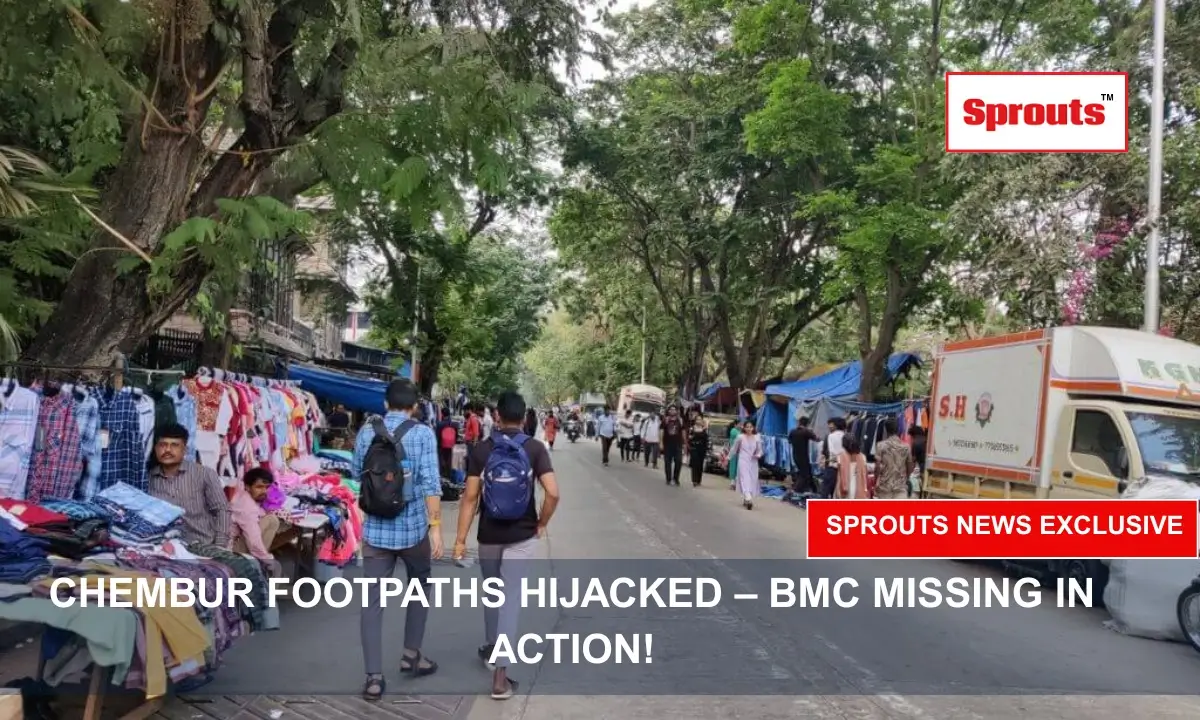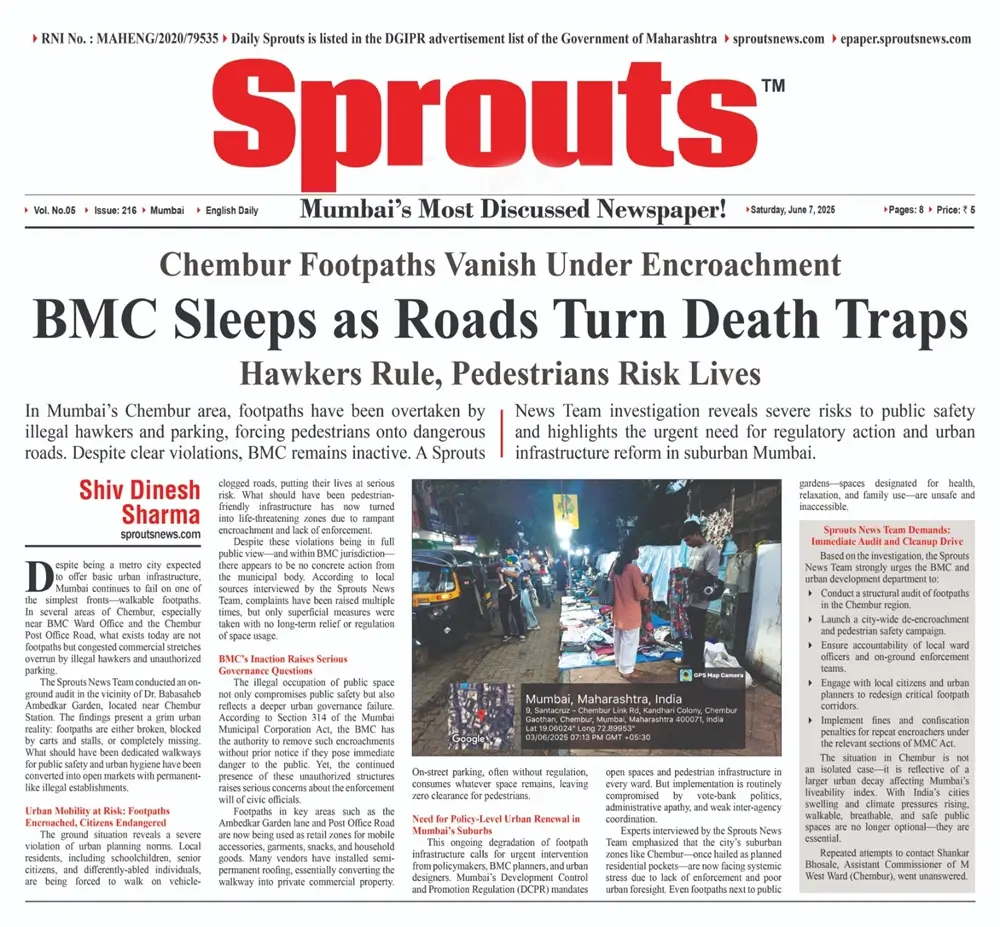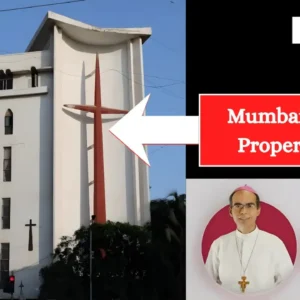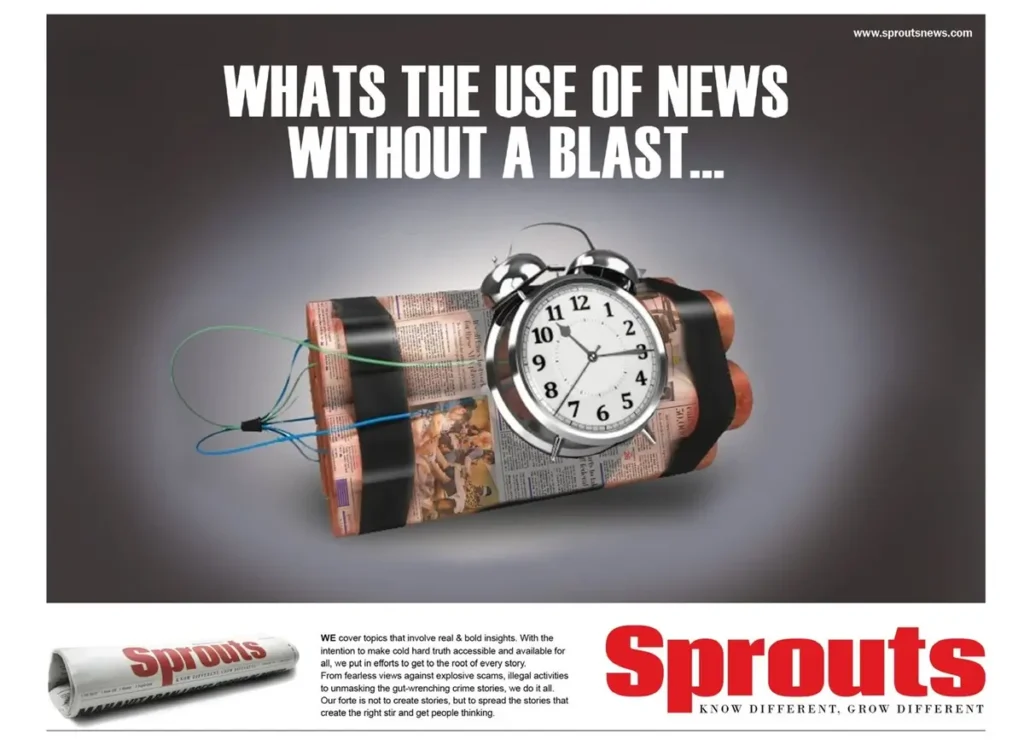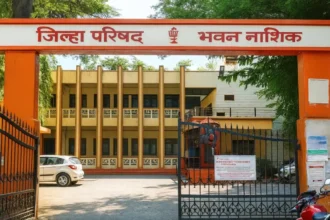BMC Sleeps as Roads Turn Death Traps
• Chembur Footpaths Vanish Under Encroachment
• Hawkers Rule, Pedestrians Risk Lives
• Footpaths Lost, Danger Gained
Shiv Dinesh Sharma
In Mumbai’s Chembur area, footpaths have been overtaken by illegal hawkers and parking, forcing pedestrians onto dangerous roads. Despite clear violations, BMC remains inactive. A Sprouts News Team investigation reveals severe risks to public safety and highlights the urgent need for regulatory action and urban infrastructure reform in suburban Mumbai.
Despite being a metro city expected to offer basic urban infrastructure, Mumbai continues to fail on one of the simplest fronts—walkable footpaths. In several areas of Chembur, especially near BMC Ward Office and the Chembur Post Office Road, what exists today are not footpaths but congested commercial stretches overrun by illegal hawkers and unauthorized parking.
Contents
- BMC Sleeps as Roads Turn Death Traps
- • Chembur Footpaths Vanish Under Encroachment
- • Hawkers Rule, Pedestrians Risk Lives
- • Footpaths Lost, Danger Gained
- Urban Mobility at Risk: Footpaths Encroached, Citizens Endangered
- BMC’s Inaction Raises Serious Governance Questions
- Need for Policy-Level Urban Renewal in Mumbai’s Suburbs
- Also Read: Over Rs 21,773 Crore in Commissions—How 15 Banks Profit from Mis-Selling Insurance, Mutual Funds?
- Sprouts News Team Demands: Immediate Audit and Cleanup Drive
The Sprouts News Team conducted an on-ground audit in the vicinity of Dr. Babasaheb Ambedkar Garden, located near Chembur Station. The findings present a grim urban reality: footpaths are either broken, blocked by carts and stalls, or completely missing. What should have been dedicated walkways for public safety and urban hygiene have been converted into open markets with permanent-like illegal establishments.
Urban Mobility at Risk: Footpaths Encroached, Citizens Endangered
The ground situation reveals a severe violation of urban planning norms. Local residents, including schoolchildren, senior citizens, and differently-abled individuals, are being forced to walk on vehicle-clogged roads, putting their lives at serious risk. What should have been pedestrian-friendly infrastructure has now turned into life-threatening zones due to rampant encroachment and lack of enforcement.
Despite these violations being in full public view—and within BMC jurisdiction—there appears to be no concrete action from the municipal body. According to local sources interviewed by the Sprouts News Team, complaints have been raised multiple times, but only superficial measures were taken with no long-term relief or regulation of space usage.
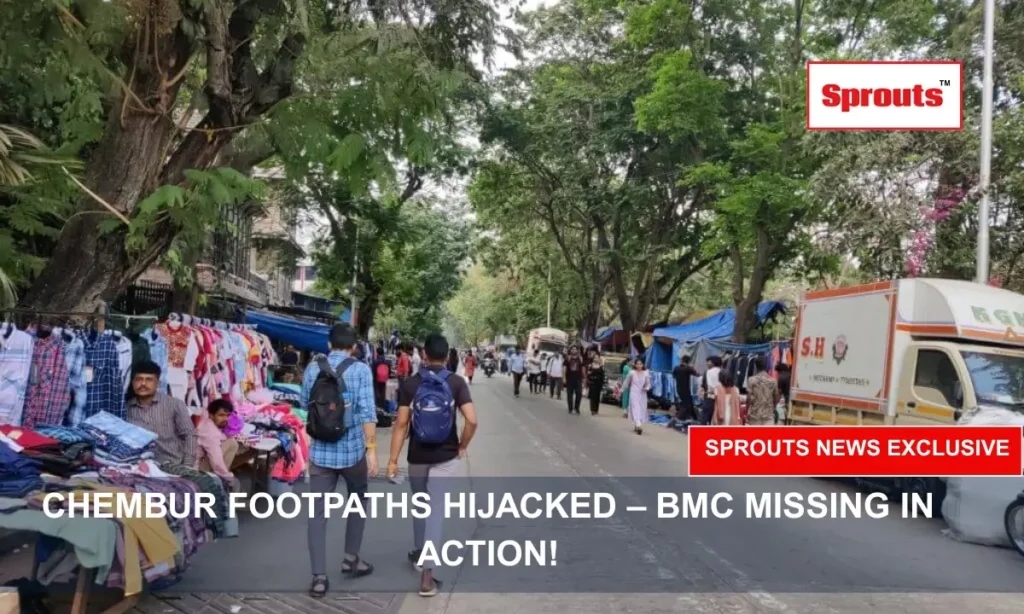
BMC’s Inaction Raises Serious Governance Questions
The illegal occupation of public space not only compromises public safety but also reflects a deeper urban governance failure. According to Section 314 of the Mumbai Municipal Corporation Act, the BMC has the authority to remove such encroachments without prior notice if they pose immediate danger to the public. Yet, the continued presence of these unauthorized structures raises serious concerns about the enforcement will of civic officials.
Footpaths in key areas such as the Ambedkar Garden lane and Post Office Road are now being used as retail zones for mobile accessories, garments, snacks, and household goods. Many vendors have installed semi-permanent roofing, essentially converting the walkway into private commercial property. On-street parking, often without regulation, consumes whatever space remains, leaving zero clearance for pedestrians.
Need for Policy-Level Urban Renewal in Mumbai’s Suburbs
This ongoing degradation of footpath infrastructure calls for urgent intervention from policymakers, BMC planners, and urban designers. Mumbai’s Development Control and Promotion Regulation (DCPR) mandates open spaces and pedestrian infrastructure in every ward. But implementation is routinely compromised by vote-bank politics, administrative apathy, and weak inter-agency coordination.
Experts interviewed by the Sprouts News Team emphasized that the city’s suburban zones like Chembur—once hailed as planned residential pockets—are now facing systemic stress due to lack of enforcement and poor urban foresight. Even footpaths next to public gardens—spaces designated for health, relaxation, and family use—are unsafe and inaccessible.
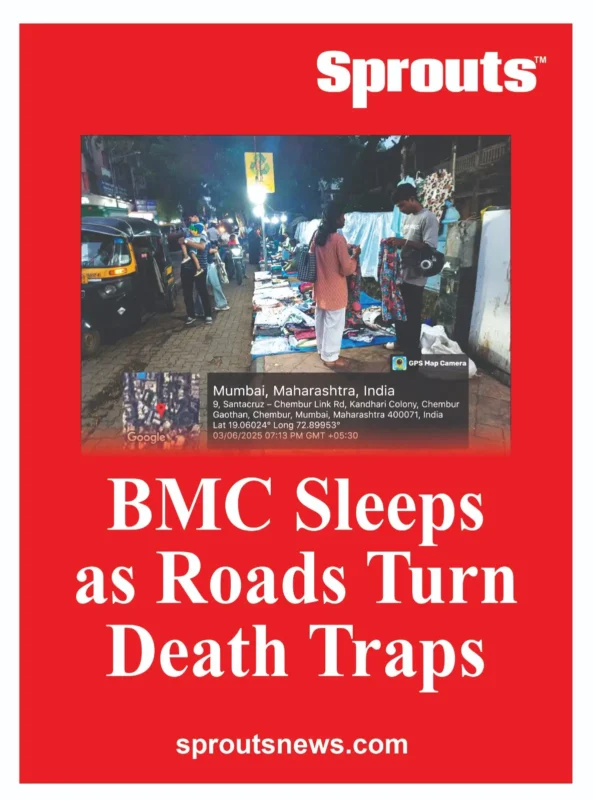
Also Read: Over Rs 21,773 Crore in Commissions—How 15 Banks Profit from Mis-Selling Insurance, Mutual Funds?
Sprouts News Team Demands: Immediate Audit and Cleanup Drive
Based on the investigation, the Sprouts News Team strongly urges the BMC and urban development department to:
•Conduct a structural audit of footpaths in the Chembur region.
•Launch a city-wide de-encroachment and pedestrian safety campaign.
•Ensure accountability of local ward officers and on-ground enforcement teams.
•Engage with local citizens and urban planners to redesign critical footpath corridors.
•Implement fines and confiscation penalties for repeat encroachers under the relevant sections of MMC Act.
The situation in Chembur is not an isolated case—it is reflective of a larger urban decay affecting Mumbai’s liveability index. With India’s cities swelling and climate pressures rising, walkable, breathable, and safe public spaces are no longer optional—they are essential.
Repeated attempts to contact Shankar Bhosale, Assistant Commissioner of M West Ward (Chembur), went unanswered.


